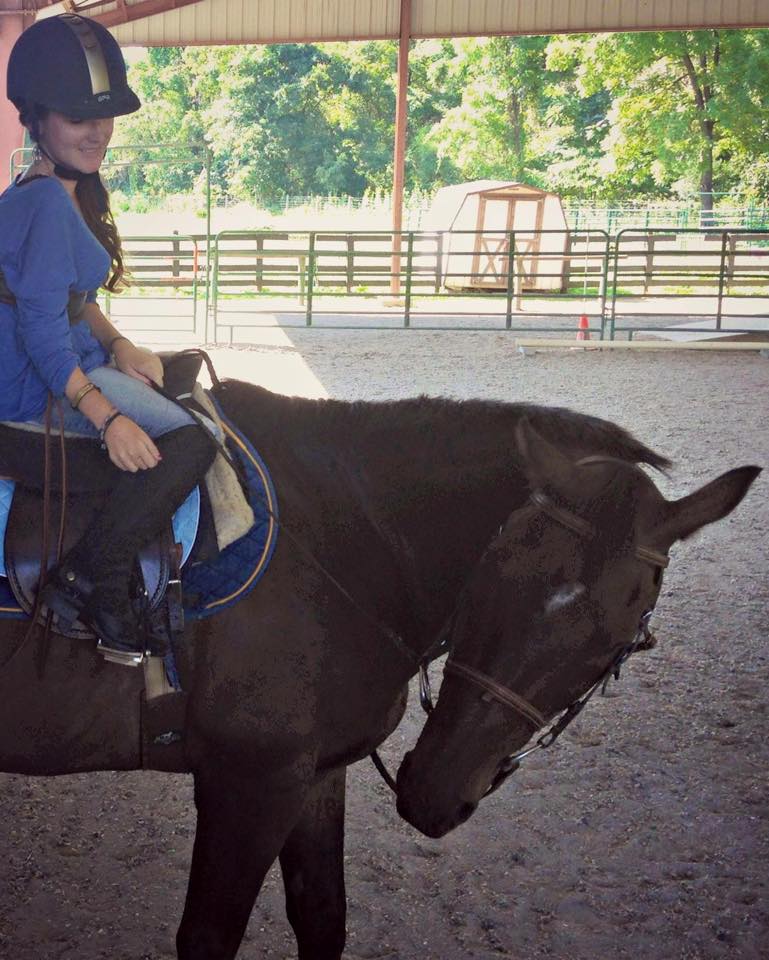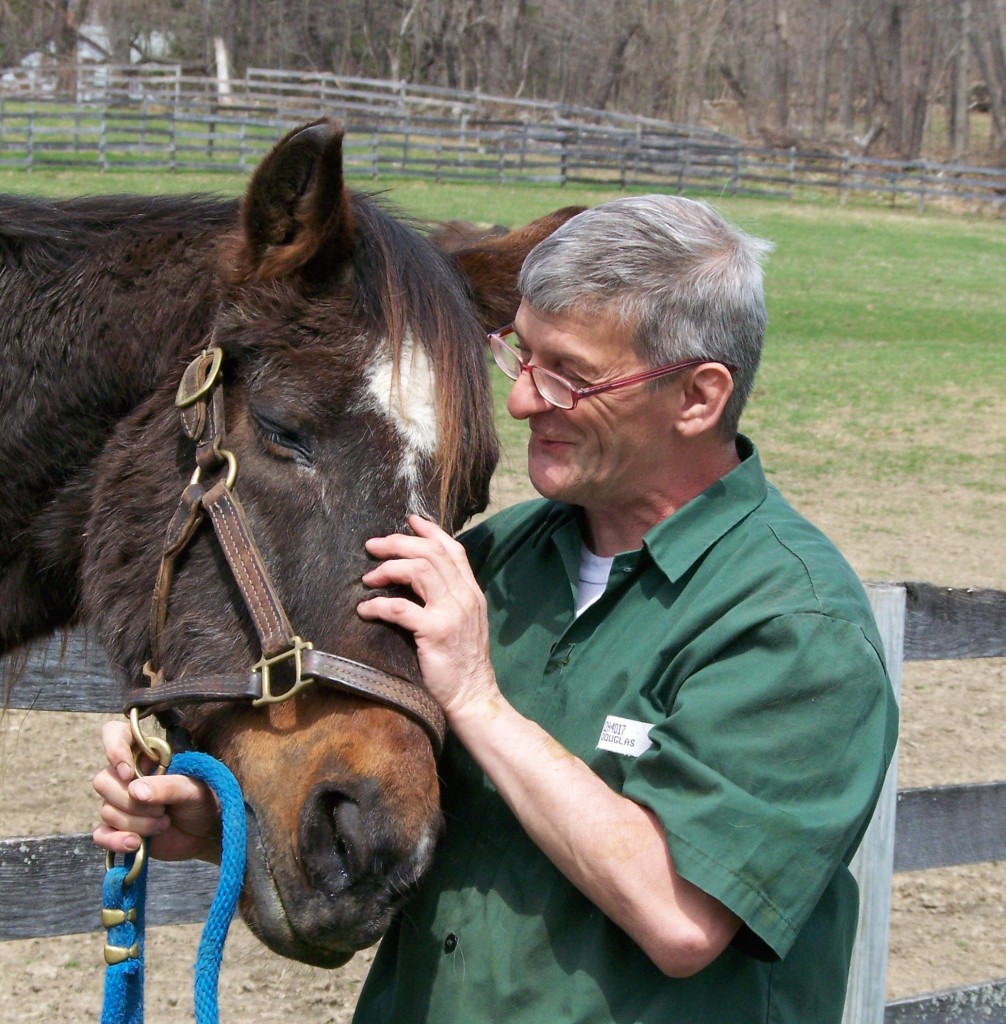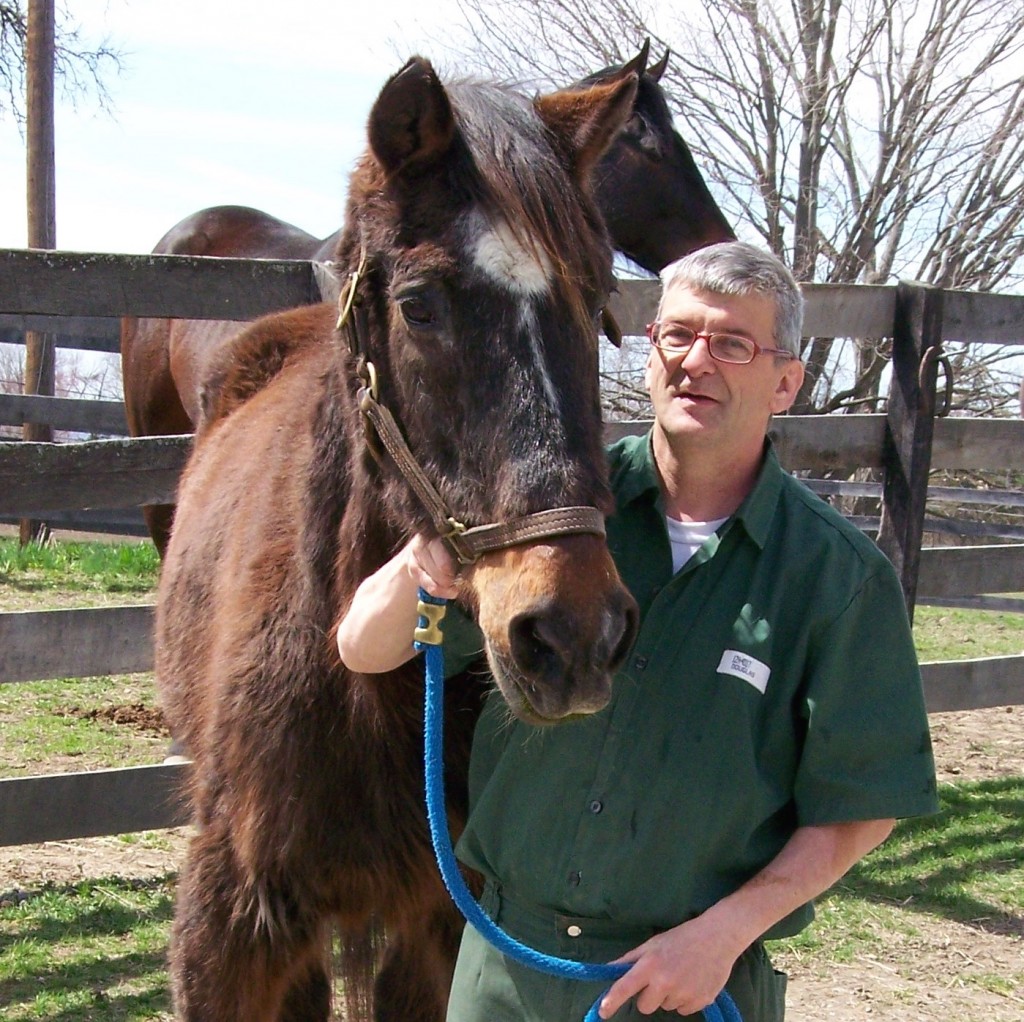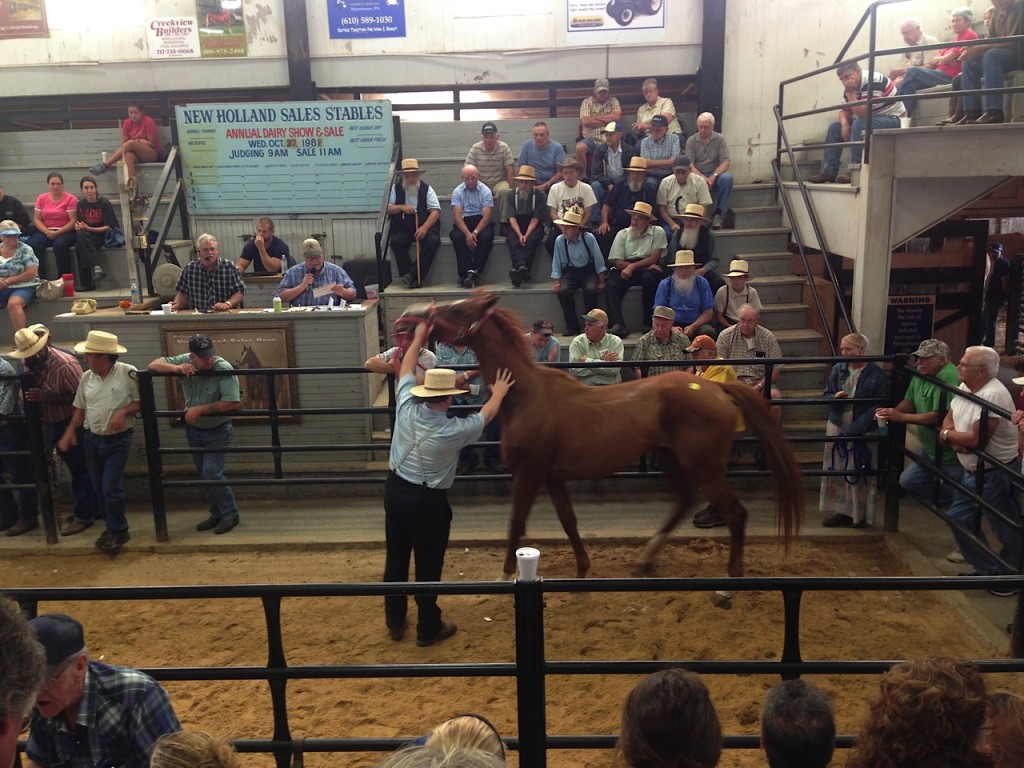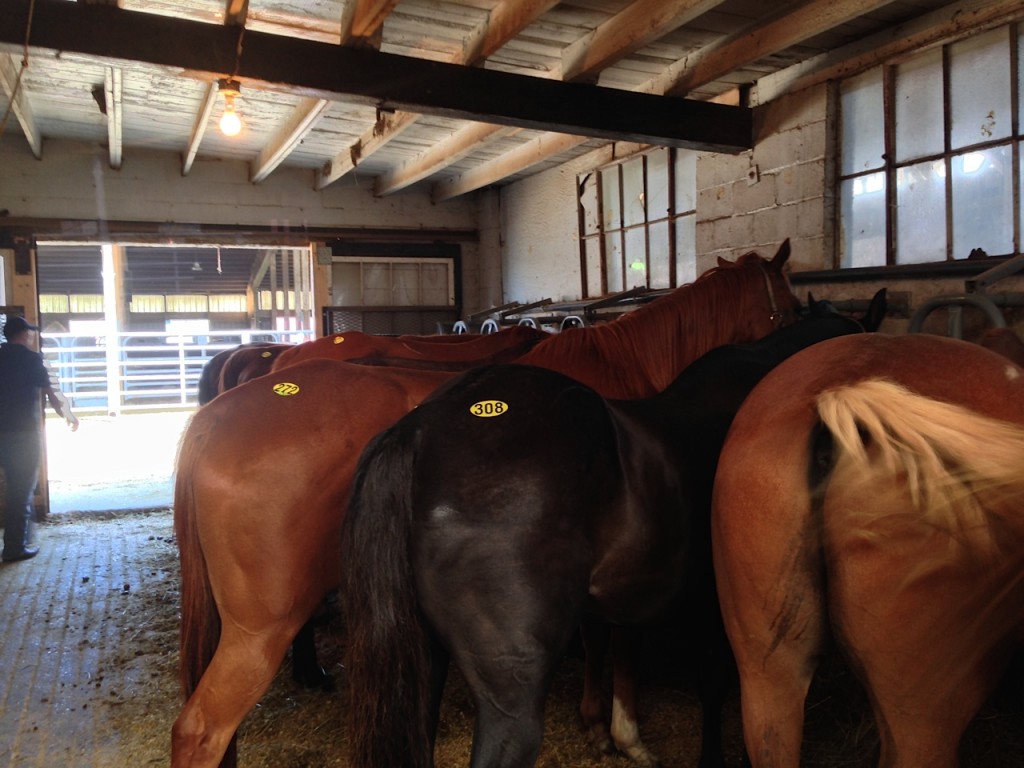A young Virginia woman confined to a wheelchair by muscular dystrophy, has broken free of her bonds, and with her heart alight with joy, rides a 17-hand Thoroughbred.
“I’ve been in a wheelchair most of my life, but when I rode Dewey, I wasn’t the ‘girl in the wheelchair’ anymore, I was ‘the girl on the horse,’ ” said Anna Collette, 22, a western Virginia horsewoman who has found a way to ride horses throughout her life, despite a diagnosis she has had since infancy.
Growing up in a horse family, Collette said she always felt self-conscious about the way she rode. Because of muscle weakness in her legs and back, she was forced to hold her legs in a position reminiscent of jockey style riding, she said.
So, in 2011, the young girl who had adapted her riding style to resemble more that of a jockey’s rather than the preferred hunter/jumper style of her family and friends, met a retired racehorse who didn’t care how she rode, or what her specially equipped saddle looked like. And from their very first meeting he made her feel special.
Do It In Three
New name: Edge of Glory
Barn name: Dewey
Sire: Sovereign Dancer
Dam: Chieftan’s Command
Foal date: June 12, 1994“I was always insecure about the way I rode. I always noticed I couldn’t ride like everyone else, and it made me feel sad. I wasn’t a normal rider,” Collette said. “Somehow Dewey put confidence in me. It’s like he somehow said to me that I may not be riding like everybody else, but I am riding, I’m just doing it in my own way. He’s made me proud to be who I am. If I weren’t who I am, I wouldn’t have found him. This horse has changed my life.”
Collette first met Dewey in 2011, after the executive director of Healing Strides of Virginia, a therapeutic riding academy, arranged for her to meet the dark bay gelding. Prior to coming up for sale, Dewey had excelled at dressage, attaining 4th level, according to published reports.
But he found his true gift when he started working with Collette.
For a year before she rode him—she waited to ride him until a specially built saddle with a chair-type back could be constructed—Dewey spent his time following Collette’s wheelchair, his nose near her shoulder, his feet carefully stepping so they wouldn’t accidentally bump her.
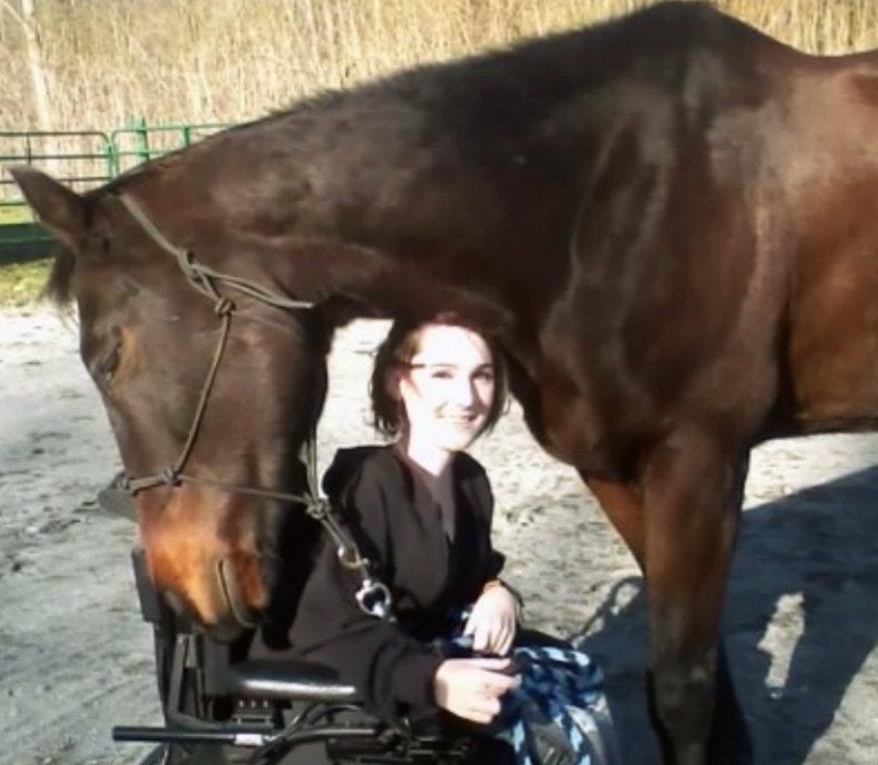
Dewey is a 17-hand OTTB who excelled up to 4th level dressage before becoming Anna’s pleasure horse.
“That whole year we did natural horsemanship together and we developed a good bond,” she said.
Finally, with the adaptive saddle in hand sometime in 2012, the moment had arrived for Collette to take her first ride on her OTTB.
“We put the saddle on him first and walked him around to let him get the feel of it. He put his ears back like he was trying to listen and figure it out, but he didn’t seem bothered by it. Then my friend Gloria, who’s able-bodied, rode him in it, and he was perfect; he acted like he’d been riding in this saddle his whole life.”
Then it was Collete’s turn. And he was even better than he’d been for her friend.
“He was so attuned to me. I immediately trusted him with my life. I knew he would never let anything happen to me,” she said. “He was so careful that when I asked him to walk on, he was so scared that he tip-toed. My coach Carol said that she’d never seen a horse do what he did, because it’s very hard for a horse to move that slowly … he’d stop every few feet and look back at me to see if I was OK. It took us about 15 minute to go around the arena.”
From those tentative first steps, the pair has gone on to pursue English pleasure riding and is working toward the goal of western riding. A new, specially equipped western saddle will be constructed for them.
But already, their story captured the hearts of Virginia OTTB fans when they competed in the Retired Racehorse Project’s Most Wanted Thoroughbred show on March 28.
Asked to join three other ex-racehorses who have excelled in post-racing careers, Dewey performed dressage with another rider, and capped off his performance with Collette.
“We were invited by Steuart Pittman to help show off the versatility of the Thoroughbred,” she said. “My friend Morgan rode him in dressage, and then we put the adaptive saddle on him. Although we didn’t win, it was an incredible experience, and I’m thankful I just got to be there.”
That moment in the limelight did wonders to help dispel the myths about Thoroughbreds, she added.
“So many people have told me that Thoroughbreds are too crazy and too hot to be therapeutic horses,” Collette said. “I even had a past instructor who told me that I shouldn’t own or ride a Thoroughbred. Dewey is the most careful horse with me, and our bond grows stronger everyday. He truly is my horse of a lifetime.”

